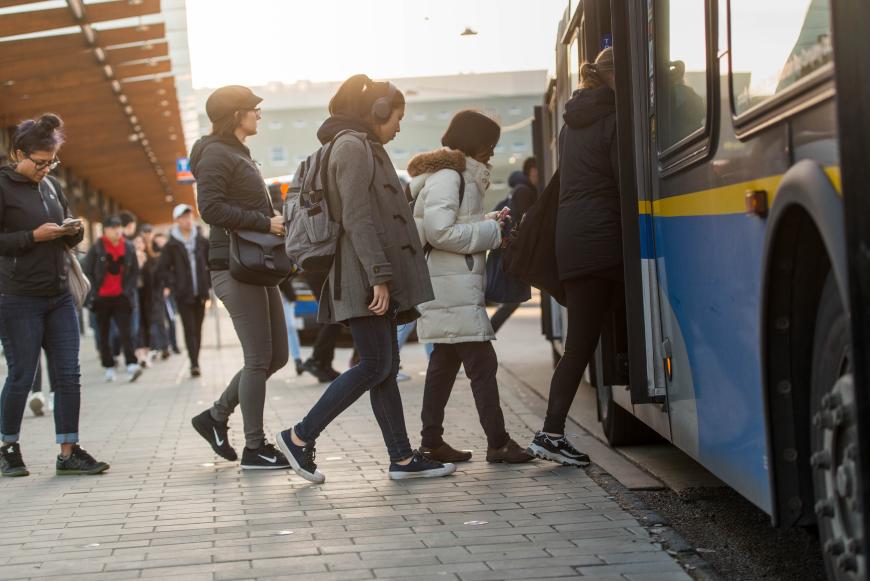
The Emergency Ride Home (ERH) program provides commuters who regularly walk, bike, take transit, vanpool, and carpool with a reliable ride home via a cab, car-share, or ride-hailing when an emergency arises and they cannot commute home by how they commuted to school or work that day. Campus + Community Planning will reimburse you for 90% of the cost (before tip)!
How Does the Program Work?
- Use a taxi, car share or ride-hail company and request a pickup.
- Request a taxi receipt or save online documentation that indicates fare paid, not including the tip.
- Students: Fill out the form below and include the original receipt. Further details below.
- Faculty/Staff: Create a Workday claim and include the original receipt. Further details below.
Eligibility - Who Can Use ERH?
To be eligible for the emergency ride home program you must meet all the following criteria:
- You are a current UBC student, faculty, or staff member
- Your emergency ride originates from a University site such as UBC Vancouver, UBC Okanagan, UBC Robson Square, or a UBC Hospital Site (e.g. VGH, St. Paul's)
- You must use a non-SOV (single occupancy vehicle) commute mode to travel school/work at UBC at least three times a week. Non-SOV commute modes include carpooling, transit, cycling, or walking.
- You must have used a non-SOV commute mode on the day you request an emergency ride home.
- This service may only be used for trips between a university site and the location of emergency, a residence, hospital, or to get to the location of a parked vehicle (e.g. park and ride). You may use the program to a maximum of two times per year.
How to Make a Claim
Only current UBC students, staff, and faculty are eligible to use the ERH. Further detailed information about eligibility is provided below.
To submit a claim, please follow the instructions for students or staff and faculty provided below. All submissions must include references details so that UBC can confirm the claim. Example references include supervisors, manager, or professors that can speak to your emergency and commuting behavior.
Additional Information
Disclaimer:
ERH is a service provided by Transportation Planning. UBC will provide the Emergency Ride Home program in accordance with the guidelines discussed above and as budget allows. By requesting assistance from the Emergency Ride Home program, the participant in the program explicitly acknowledges that UBC assumes no liability for the timeliness of participating vendor(s) or any accidents that may occur during an ERH trip. Any attempt at defrauding the service will be dealt with accordingly.